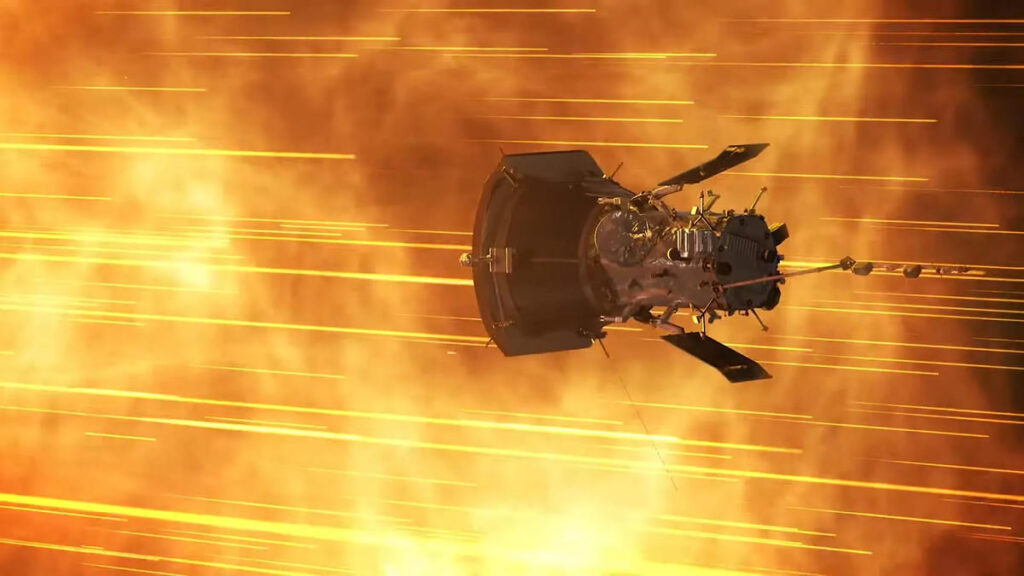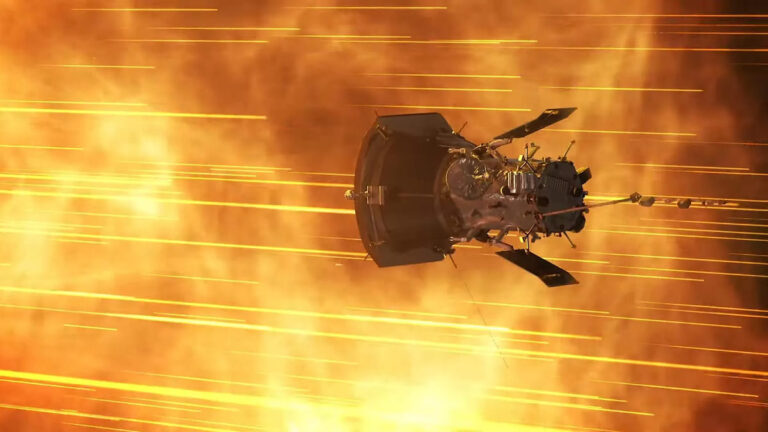Imagine flying faster than any human-made object ever has—this isn’t a scene from a sci-fi movie; it’s what NASA’s Parker Solar Probe is gearing up to achieve by the end of this year. Having matched its own closest approach to the Sun on March 30, the probe is now setting its sights on a December 24 rendezvous that promises to smash previous records, both in proximity and velocity.
Reaching for the Sun
During its 19th orbit, the Parker Solar Probe flirted with the fiery edges of the Sun, cruising to about 7.26 million kilometers from our star’s surface. This daring maneuver matched the probe’s previous record for the closest approach, a testament to its enduring design and the precision of the teams behind it at Johns Hopkins Applied Physics Laboratory in Laurel, Maryland, where it was also built.
However, it’s the next lap in this cosmic race that has scientists and space enthusiasts buzzing with excitement. On December 24, aided by a gravity assist from Venus on November 6, the probe will swoop even closer to the Sun, to a mere 6.12 million kilometers away. This closer encounter is not just about breaking records; it will also increase the probe’s speed to an astonishing 692,000 kilometers per hour.
Speeding Through the Solar System

Matching its prior speed record of 635,266 kilometers per hour on its last close pass, the Parker Solar Probe’s upcoming venture will push it well into unprecedented speeds. To put that in perspective, that’s nearly fast enough to get you from New York to London in about 30 seconds—talk about a speedy trip!
Communications with the probe were successfully established on April 2, confirming the probe’s good health and readiness for its historic mission. This upcoming venture isn’t just for the thrill or the records; it’s a crucial part of understanding our Sun better.
Shining Light on Solar Mysteries
The data gathered by the Parker Solar Probe is invaluable for solar scientists. By braving the intense heat and radiation near the Sun, the probe collects detailed information about the solar atmosphere, its magnetic fields, and the solar wind. This isn’t just academic; understanding the Sun’s behavior is crucial for predicting space weather, which can have profound effects on Earth’s technology and power grids.
As the Parker Solar Probe prepares to make history, it’s a reminder of our enduring quest to understand the cosmos and our place within it. Each record it breaks brings us closer not just to our Sun, but to comprehending the vast, mysterious universe we’re all a part of.
 Parker Solar Probe Prepares To Break Humanity’s Speed Record
Parker Solar Probe Prepares To Break Humanity’s Speed Record





